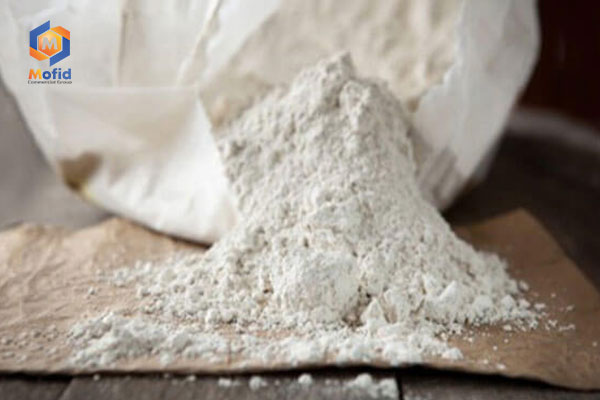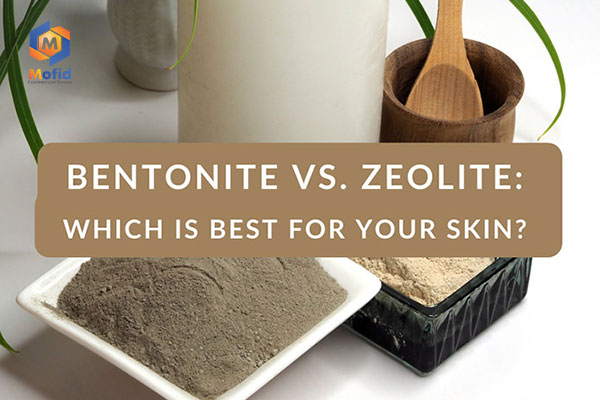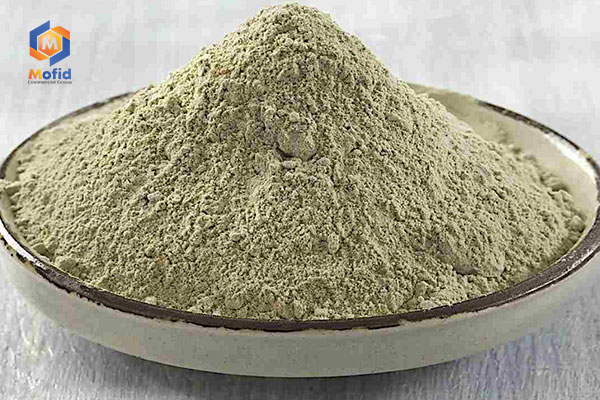Bentonite vs. Zeolite:
Bentonite and zeolite are two minerals widely used for therapeutic and hygienic purposes, both possessing body-cleansing properties. Bentonite is a type of clay, whereas zeolite is a crystalline mineral formed from molten materials.
Bentonite, also known as montmorillonite, is found worldwide, with the largest deposits in North America. Physically, it is a cream-colored, odorless, soft, and fine-grained substance. Bentonite molecules have an electric charge, enabling them to expand when absorbing water. This property allows bentonite to absorb toxins and heavy metals, aiding in skin cleansing or detoxifying various substances.
Bentonite’s ability to absorb water and ions has made it famous in various industries. It is used in animal and poultry feed production, petrochemical and oil well drilling, creating molds for metal casting, water and wastewater treatment, and producing hygienic and cosmetic products such as creams and gels.
On the other hand, zeolite is a crystalline aluminosilicate mineral formed when molten materials mix with saltwater. Over millions of years, volcanic ash crystallizes into zeolite. The term “zeolite” originates from Greek, meaning “boiling stone,” because it emits steam when heated. Zeolite has a honeycomb structure composed of silicon and aluminum oxide and carries a negative electrical charge.
Therapeutic Uses of Bentonite and Zeolite:
Many people believe in bentonite’s healing properties, using it to cleanse their skin. It is applied to absorb bodily toxins and improve the digestive system’s function. Bentonite is also used for relieving diarrhea and treating heavy metal poisoning. Found in facial masks, creams, and sunburn treatments, it is available as powder, gel, or capsules.
Zeolite is utilized to absorb heavy metals and free radicals. It is also used to reduce acid reflux and balance blood acidity. Some believe that zeolite may help lower blood sugar levels in diabetic patients.
However, oral consumption of these minerals should be approached cautiously, consulting with traditional medicine experts. Bentonite consumption can lead to constipation in some individuals and may damage the digestive system if consumed excessively.
Furthermore, a rare and aggressive type of lung cancer has been linked to zeolite exposure, as it contains chemical compounds similar to asbestos and other carcinogens. To mitigate potential risks, consult a doctor before ingesting these minerals.
Differences Between Bentonite and Zeolite:
Both bentonite and zeolite are absorbent clays used in hygiene and therapeutic applications. Bentonite is a type of aluminum silicate clay with remarkable swelling properties, formed from volcanic ash. It has a two-dimensional layered structure and is highly efficient in absorbing water, ions, and toxins. In contrast, zeolite is a hydrated aluminosilicate with a three-dimensional structure, featuring numerous pores for water absorption. Bentonite has a pH of approximately 10, while zeolite has a pH of 7.5, making it less alkaline.
Differences Between Bentonite and Kaolin:
Bentonite and kaolin are both types of clay. Kaolin contains high amounts of kaolinite, with the chemical formula Al₂Si₂O₅(OH)₄, while bentonite consists of montmorillonite with the formula Al₂H₂Na₂O₁₃Si₄. Structurally, kaolin comprises tetrahedral sheets of silica and octahedral sheets of alumina, connected by oxygen atoms. Bentonite, on the other hand, has a two-dimensional layered structure with a central octahedral alumina sheet flanked by two tetrahedral silica sheets.
The primary difference lies in their formation. Kaolin is produced through the weathering of aluminum silicate minerals like feldspar, while bentonite forms from the reaction of volcanic ash with water.
What is Bentonite, and What are Its Uses?
Bentonite is a swelling clay derived from the weathering of volcanic ash, rich in montmorillonite. It is renowned for its excellent water and fluid absorption properties. Bentonite exists in three types: calcium, sodium, and potassium, each serving diverse purposes:
- Drilling Bentonite: Used for lubricating and cooling cutting tools and drills, as well as stabilizing well walls during oil and water drilling to prevent collapse.
- Feed-Grade Bentonite: Known for its exceptional toxin absorption, it is included in livestock and poultry diets to eliminate fungal toxins and mycotoxins, preventing poisoning.
- Casting Mold Bentonite: Its adhesive properties make it an ideal binder for creating molds in sand casting.
- Agricultural Bentonite: Sodium bentonite is particularly effective for water retention and soil improvement in agriculture.
- Earthing Bentonite: Activated bentonite, or earthing clay, is used in grounding systems for buildings due to its low electrical resistance.
What is Zeolite, and What are Its Uses?
The Difference Between Zeolite and Bentonite: Zeolites are minerals rich in aluminosilicate with numerous micropores for water absorption. They can be natural or synthetic. Natural zeolite forms from the reaction of volcanic rocks with alkaline groundwater, a process that takes thousands to millions of years. Natural zeolite contains impurities such as metals, quartz, and minerals. Applications include:
- Water Purification: Zeolite is widely used in drinking water treatment.
- Catalysis and Adsorption: It serves as a catalyst and absorbent in various industries.
- Oxygen Generation: Zeolite is used in oxygen concentrators to remove nitrogen from compressed air and supply oxygen for home, industrial, and portable devices.
- Nuclear Applications: Zeolite is utilized in reactors and for radioactive waste management.
What is Kaolin, and What are Its Uses?
The Difference Between Zeolite and Bentonite: Kaolin, or kaolinite, is a layered silicate mineral clay. It consists of a tetrahedral silica sheet bonded to an octahedral alumina sheet. Kaolin is a soft, white mineral produced from the chemical weathering of aluminum silicate minerals such as feldspar. It is abundant worldwide and used in various applications:
- Paper Production: Half of the global kaolin output is used in paper manufacturing.
- Ceramics and Glazing: Kaolin is essential for ceramics and glaze production.
- Cosmetics and Skincare: Found in toothpaste, cosmetics, and protective skin creams.
- Pigment and Titanium Dioxide Substitute: Used to save on titanium dioxide costs.
- Pesticides and Plant Protection: Employed as a pesticide and plant protectant.
- Water Treatment: Utilized in water and wastewater purification.
Conclusion
Bentonite, zeolite, and kaolin are three unique minerals, each playing a crucial role in various industries. Bentonite, with its exceptional ability to absorb water and toxins, finds widespread application in drilling, casting, agriculture, and animal feed industries. Zeolite, due to its three-dimensional structure and high absorption capacity, is utilized in water purification, oxygen concentrators, and even nuclear industries. Kaolin is widely recognized for its use in producing paper, ceramics, and cosmetics.
Understanding the structural differences and applications of these materials can help in their proper selection and optimal utilization across different industries. Additionally, considering the sensitivities associated with the oral consumption of some of these materials, consulting specialists is essential. The diverse applications of these minerals highlight their significant scientific and industrial value in both everyday life and advanced technologies.



